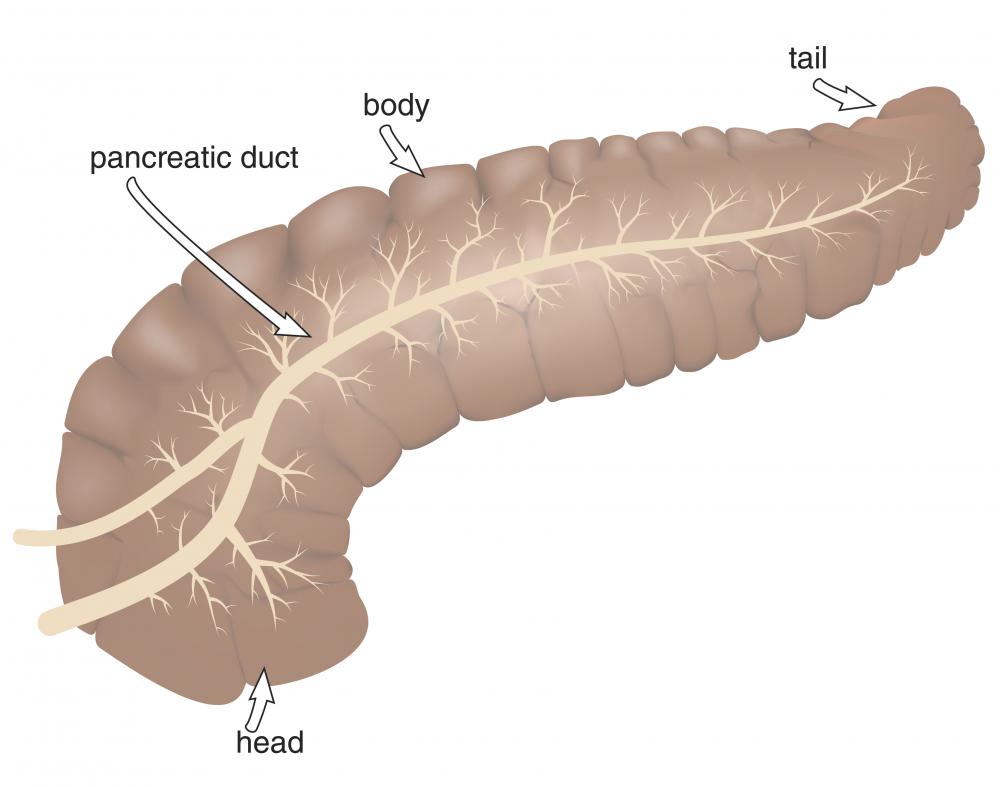At TheHealthBoard, we're committed to delivering accurate, trustworthy information. Our expert-authored content is rigorously fact-checked and sourced from credible authorities. Discover how we uphold the highest standards in providing you with reliable knowledge.
What Is the Structure of Amylase?
The structure of amylase, an enzyme that breaks down starches and complex sugars into simple sugars, is usually quite simple, but the enzyme plays an important role in digestion of carbohydrates. There are two different variations of this molecule, called alpha amylase and beta amylase. The human body has two types of alpha amylase, one in saliva and one in the pancreas. Both molecules are important in carbohydrate digestion, since the body cannot digest complex sugars and starches without breaking them down first. Beta amylase is not present in the human body, and is usually found in plants and seeds.
While the structure and type of amylase can vary among organisms, there are some characteristics that all amylase molecules have in common. Alpha and beta amylases both contain a structure called a barrel region, which contributes much of the enzyme's overall shape. The enzymes also all have an essential area called an active site. This is the part of the enzyme that binds to a complex sugar or starch in order to break it down. The process of breaking down carbohydrates in the active site involves interactions between multiple groups of atoms and ions, both in the active site and on the carbohydrate molecule.

In the human body, the structure of amylase is similar whether it is found in saliva or in the pancreas. Both human variants of amylase are small molecules composed of a single chain of building blocks called amino acids. The amino acid chain forms three distinct regions called domains, and each domain has a specific biological function assisting in carbohydrate breakdown. Two of these domains are tightly associated together, while the third domain can vary significantly among amylases. Despite their similarity, salivary and pancreatic amylases are not interchangeable; pancreatic amylase usually finishes the job that salivary amylase began.

Though the structure of amylase is usually simple, there are some variants that are significantly more complex than most. Most alpha amylases are very similar in length, but some fold into more than the three common domains. Some beta amylases are enormous compared to alpha amylases, containing four separate amino acid chains instead of one. In this case, a structure of amylase four times larger than most others is built. Many familiar food crops contain this type of amylase, including barley, soybeans, and sweet potatoes, but the size of the amylase molecule does nothing to enhance or detract from the plant's nutritional properties.
AS FEATURED ON:
AS FEATURED ON:













Discussion Comments
This gives new credence to the saying, chew your food properly. Our saliva begins the digestive process. If food is chewed properly it will mix thoroughly with saliva and the process of breaking down the food can begin. If not chewed properly and if the saliva is not allowed to do its work by being in contact with food long enough, the nutrients in the food will not be as accessible to us, if at all.
Post your comments